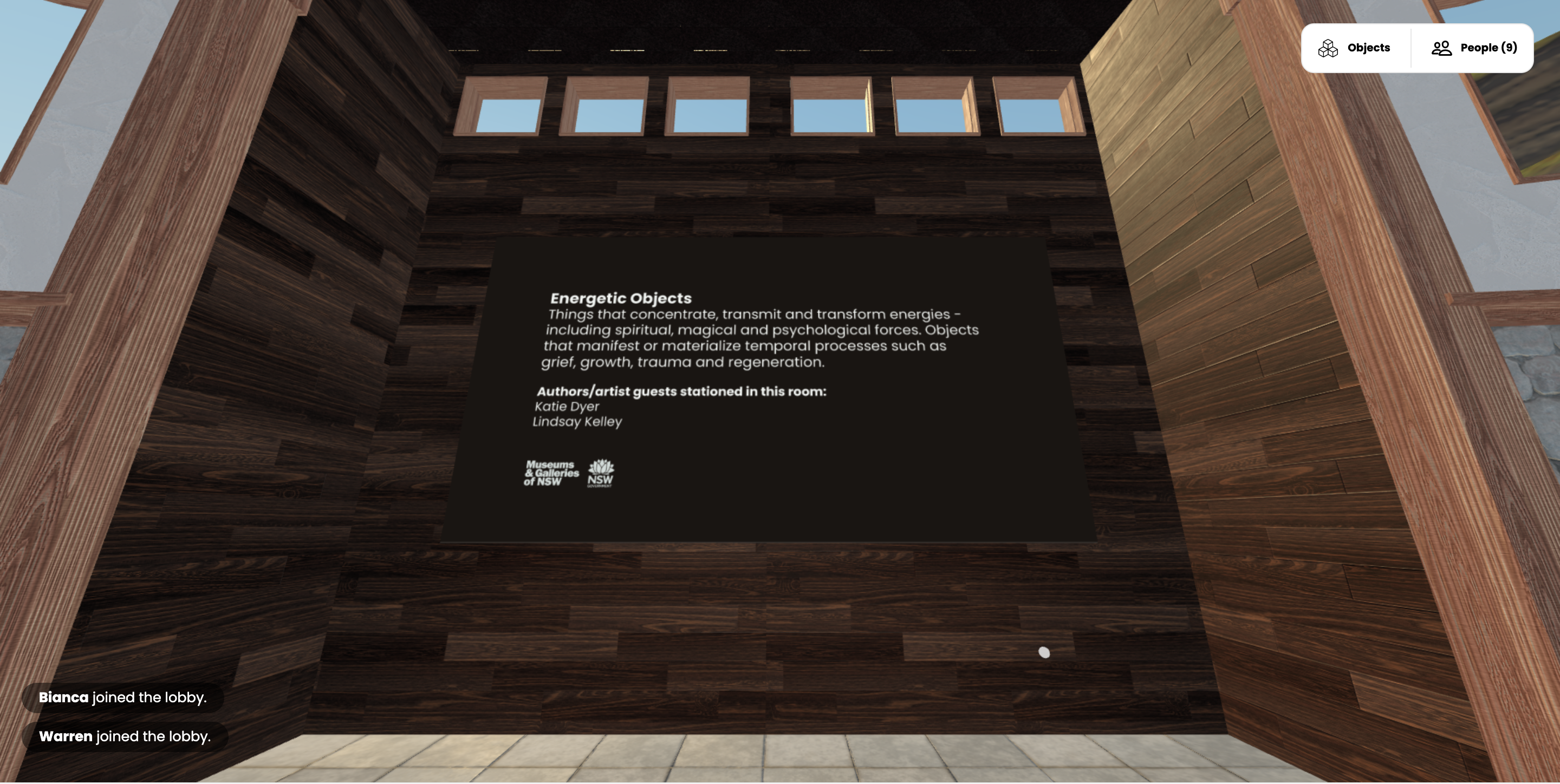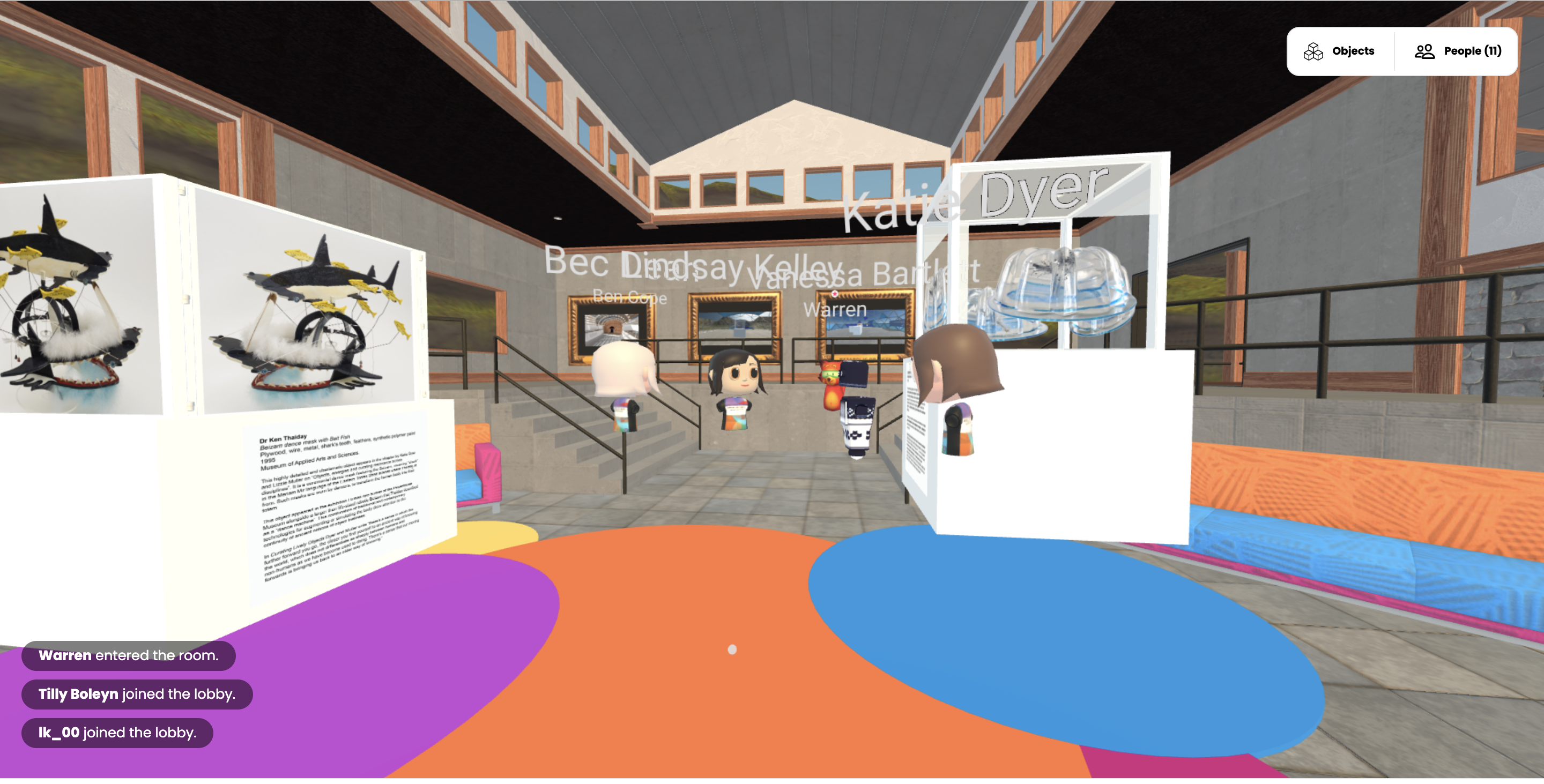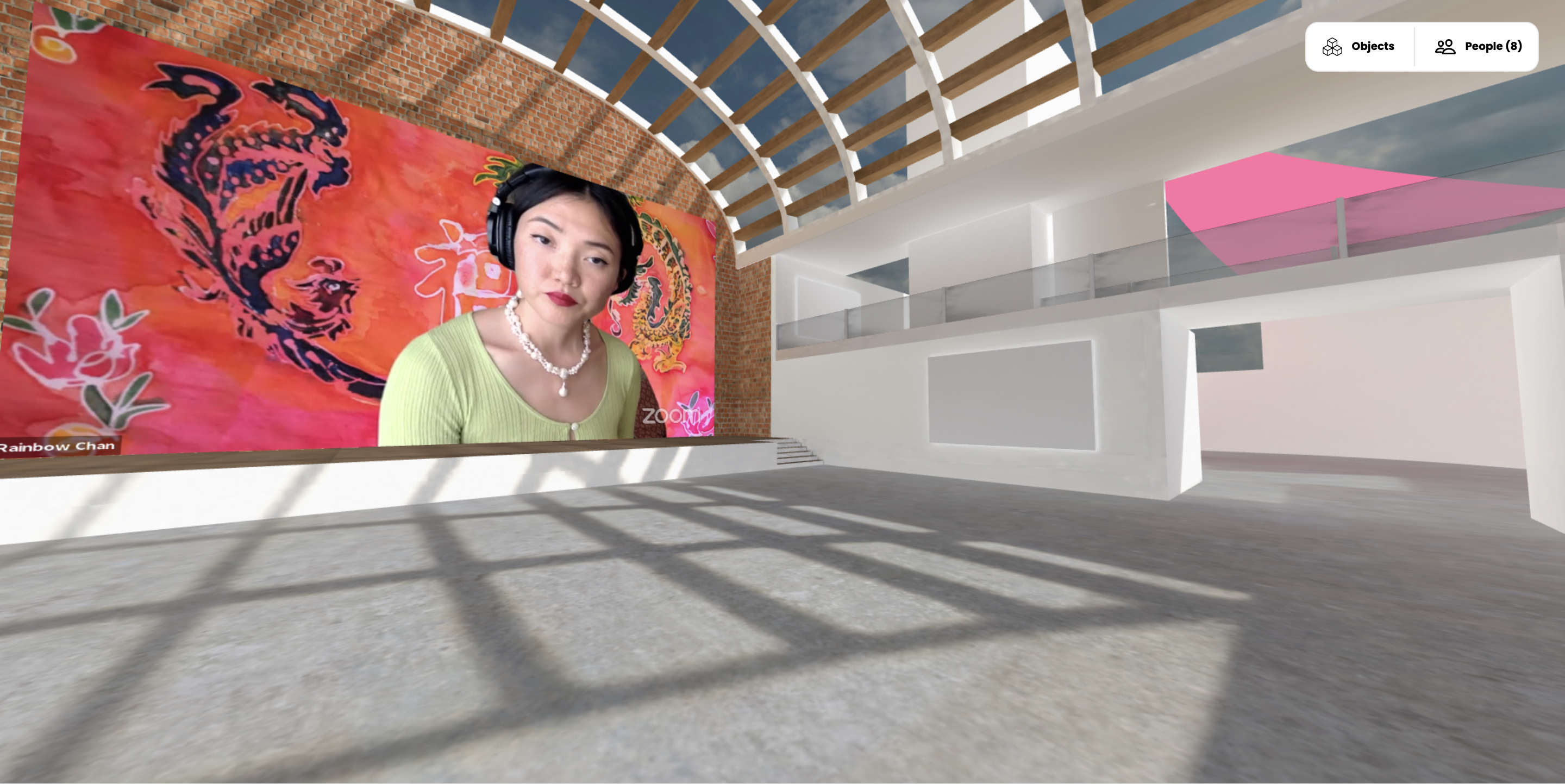Let’s Get Lively
Zanny Begg, Digital Creative for Let’s Get Digital, invited Lizzie Muller to work with M&GNSW on a virtual event and online resource, to explore the power of “lively objects” to reshape museum thinking. Let’s Get Digital is a year-long project aimed at helping the museum and gallery sector engage with digital technologies and improve audience experiences. Lizzie is a curator and researcher specialising in audience experience and interdisciplinary collaboration, she has a keen interest in the future of museums as sites of knowledge production. Her book, Curating Lively Objects: exhibitions beyond disciplines, co-edited with Caroline Seck Langill, is an anthology of writing that engages with the ways in which objects – the weird, unruly, rebellious, and sometimes confronting things that sit in museum collections – can help us re-think our relationship with museums as a whole.
Lizzie and Caroline argue that digital objects are “productive troublemakers” that drive change in museums. To celebrate the liveliness of digital things, and as an innovative response to COVID restrictions, Zanny invited Warren Armstrong to create a bespoke virtual meeting space, complete with a stage for a live performance by Rainbow Chan and vitrines filled with some of the troublesome objects featured in the book. Over 200 people registered for the special event grappling with avatars, virtual reality, and digital communication along the way. To visit the room, or use it for your own virtual meeting, click here.
To further the conversation on the “lively” potential of objects in the museum sector M&GNSW have worked with Lizzie to produce this digital resource based on the book. The resource includes a short guide to the main ideas in the book, plus three full chapters that are particularly relevant to NSW Museums, available to download for free.
“Curating Lively Objects responds to the deep sense that curators collaborate in a tangible, passionate and reciprocal way with things… we describe these objects as lively to convey the feeling that they speak, offer suggestions, make demands and pose problems.”

Zanny Begg in conversation with Lizzie Muller
Curating Lively Objects: Exhibitions Beyond Disciplines
Dr Lizzie Muller, Associate Professor, UNSW
Lively objects thrive in the many regional, local and community museums that are connected and supported by Museums & Galleries NSW. Curators and audiences of these often eclectic and idiosyncratic museums have personal and vibrant relationships with the objects in their collections. I am therefore delighted to collaborate with M&GNSW to create an online resource based on Curating Lively Objects – a book that is intended to capture and explore such vibrancy, and the opportunities it offers for re-imagining museums beyond the colonial inheritance of disciplinary thought.
Feeling lively
As my co-editor Caroline Seck Langill and I write in our opening line of the book:
“Curating Lively Objects responds to the deep sense that curators collaborate in a tangible, passionate and reciprocal way with things… we describe these objects as lively to convey the feeling that they speak, offer suggestions, make demands and pose problems.”
The idea of object liveliness has enjoyed a surge in interest in philosophy and theory over the past decade, and of course we and many of the authors in the book make use of that conceptual richness in our chapters. But our decision to begin with liveliness as a feeling has allowed us to both include and exceed the many technical and sometimes contentious terms at work in theoretical discourse – terms like animism, agency, spirituality, and intelligence. All those things are at play in this book, but we don’t hang our hat on any one of them. Bringing multiple perspectives together on a topic is one of the great advantages of an edited anthology. Authors in the book consider objects as diverse as rocks, databases, altarpieces, and robots – and together offer a rich depiction of what it can mean for objects to feel alive.
Beyond disciplines
Since the 19th Century curators have played a crucial role in forming and policing the boundaries of knowledge through what are often known in museums studies as “disciplinary objects” – things that are both subject to and carriers of disciplinary thought. Those big divisions in knowledge – between science, art, technology, natural history, anthropology – have proven amazingly resilient in the way we structure museums, even though they increasingly misrepresent the way contemporary knowledge is produced or experienced. In this book we present “lively objects” as counterpoints to disciplinary objects. They are the things that can help us create new ways for museums to collect and display material culture – and more importantly to generate and include previously excluded forms of “un-disciplined” or lively knowledge.
Digital objects as change makers
As editors Caroline and my own interest in lively objects as engines for disciplinary change stems from our shared experiences as curators of media art during the early 2000s.
In our earlier work together, we had noted that the lively characteristics of digital objects – such as interactivity, autonomy or generativity – were often considered as problems by museums, and used as excuses not to include media art in mainstream exhibitions.
Art museums, it’s worth noting, are probably the most mono-disciplinary museums of all, and media art objects tended to mix up categories that they preferred to keep apart. We started to consider these digital things as social beings, who could perhaps be productively disruptive if they were allowed to mingle with other kinds of things.
From our early curatorial experiments integrating digital objects into exhibitions in “post-disciplinary” ways, we realised that whilst the liveliness of digital objects may be particularly “attention seeking”, liveliness itself isn’t a property of a small number of special objects. Liveliness is the true potential of all objects, depending on how they’re cared for and contextualised. Their liveliness can be muffled and subdued or amplified through the way they are curated.
Decolonising museums
This book emerged from a group residency we organised at the Banff International Curatorial Institute to consider this idea from a joint Australian and Canadian perspective. The disciplinary project of the nineteenth century museum was a colonial project. Decolonising museums requires us to move beyond the disciplinary logic of the imperial state. Canada and Australia as colonised countries share many experiences that influence how we think about both liveliness and museums.
Of course, not all ways of curating with lively objects can be considered “decolonising”, and in the book we offer some critique, through the work of First Nations scholars of the way contemporary western theories of liveliness either ignore or in some cases appropriate Indigenous ways of knowing. First Nations practitioners at the residency and in the book led our understanding of the potential of lively objects to reimagine museums beyond, before and apart from Western disciplinary thought. And I want to particularly acknowledge the crucial work of those practitioners in this project including Brook Andrew, Tess Allas, Lisa Myers and Ryan Rice.
What you’ll find in the book
Based on the discussions we had in Banff we developed three thematic threads or kinds of liveliness that became the three sections that structure the book. These three sections are also the basis of the three rooms M&GNSW created in the virtual world where the launch of the book was held, where virtual versions of some of the objects discussed in the book can be found.
Our first main theme considered the ways in which lively objects can be resistant or disruptive. We’ve called this section “troublesome objects” and in it you’ll find things that challenge categories, and create productive discord for institutions and their publics.
Our second main theme is the way in which colonisation and disciplinarity are imprinted on our bodies. This section became known as metabolic objects and deals with the fleshy beings of medicine, cookery, biotechnology and natural history. Authors in this section examine the ethical implications of curating with such lively bodies, and the dynamics of care they require. Our final theme – Energetic objects, examines things that concentrate, transmit and transform energies – including spiritual, magical and physical forces.
More information on the book can be found here.
Chapters (available for free):
Introduction, Lizzie Muller and Caroline Seck Langill
Digital-physical-emotional immersion in Country. Bearing witness to the Appin Massacre.
Tess Allas interview by Lizzie Muller.
Objects, energies and curating resonances across disciplines
Katie Dyer interviewed by Lizzie Muller
Reproduced with permission of Informa UK Limited through PLSclear. Curating Lively Objects: Exhibitions Beyond Disciplines, Routledge, 2021 © 2022 selection and editorial matter, Lizzie Muller and Caroline Seck Langill; individual chapters, the contributors The right of Lizzie Muller and Caroline Seck Langill to be identified as the authors of the editorial material, and of the authors for their individual chapters, has been asserted in accordance with sections 77 and 78 of the Copyright, Designs and Patents Act 1988. All rights reserved. No part of this book may be reprinted or reproduced or utilised in any form or by any electronic, mechanical, or other means, now known or hereafter invented, including photocopying and recording, or in any information storage or retrieval system, without permission in writing from the publishers.




